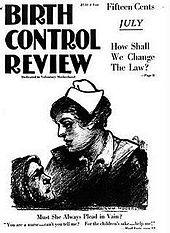The History of Feminism- Lois Banner

Women reformers and their male allies fought state by state to change such laws as well as to gain equal access for women to higher education, the professions, and the work force. It took over fifty years for women to gain the right to vote: The 15th Amendment, passed in 1870 as a result of the Civil War, gave blacks the right to vote, but it implicitly excluded women. The woman suffrage amendment–the nineteenth amendment–became law in 1920.
Thousands of women were involved in this struggle on the local, state, and national levels. They included women of every race and ethnicity: Ida Wells-Barnett from Chicago fought against the lynching of blacks as well as for the inclusion of black women in the women’s rights movements. Women became involved in struggles to create parks and playgrounds; sanitation systems for dirty, decaying cities; and juvenile courts for minors. In the 1890s Jane Addams initiated the settlement house movement, in which recent college graduates lived in areas of urban poverty to bring services to those areas and to help their inhabitants to get ahead. Such reform movements also included organizations to assure that unmarried women raising children would be given pensions akin to the pensions given soldiers for their service to the state. Raising children as future citizens of the state, it was argued, is as important as fighting for one’s nation. Such “welfare” laws were enacted at the state level as early as the 1900s. By the 1920s, once suffrage was passed and the laws regarding property, women’s bodies, and child custody had been overturned, the issue of how to combine marriage with a career became of major importance. It echoes a theme with great resonance today.
In the early twentieth century the word feminism entered the English language. Coined in France, it meant the search for equality between men and women. It implied that men as well as women would adjust to a new egalitarian order and that home and family would be as important as work outside the home. In its broad reach, feminism accommodated both the need for lesbian women to strive for their own ideals as well as the desires of some women to make domesticity the center of their lives.
In the broader struggle for women’s rights, what has come to be called “backlash” over occurred. In other words, significant movements arose to attempt to deny women rights and to place them squarely in the domestic sphere. As is often the case, the backlash was directed against women’s bodies. Thus laws were passed in the 1870s making abortion and even birth control illegal. Once again women had to struggle to gain their rights. It was not until the 1930s that the anti-birth control laws were overturned, and abortion was not made legal until the Supreme Court decision in Roe v. Wade. in 1973, and even then it was decreed that women had to have the support of a doctor in making such a decision.




